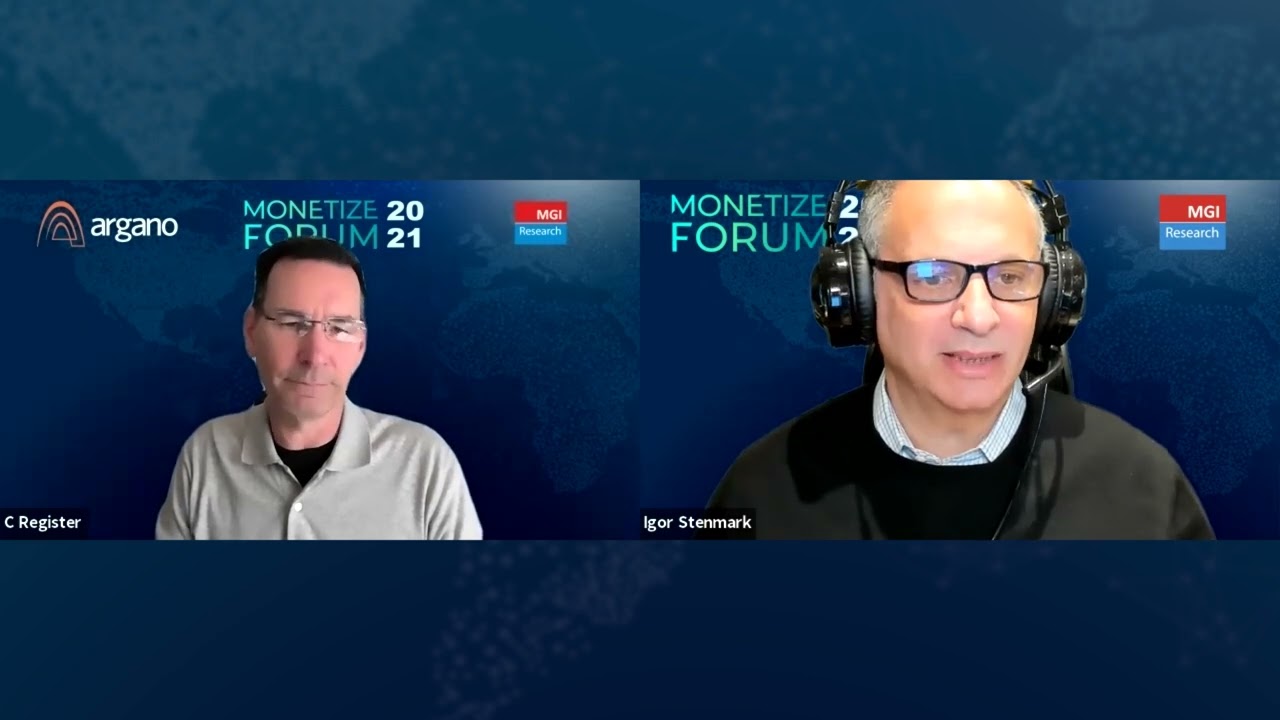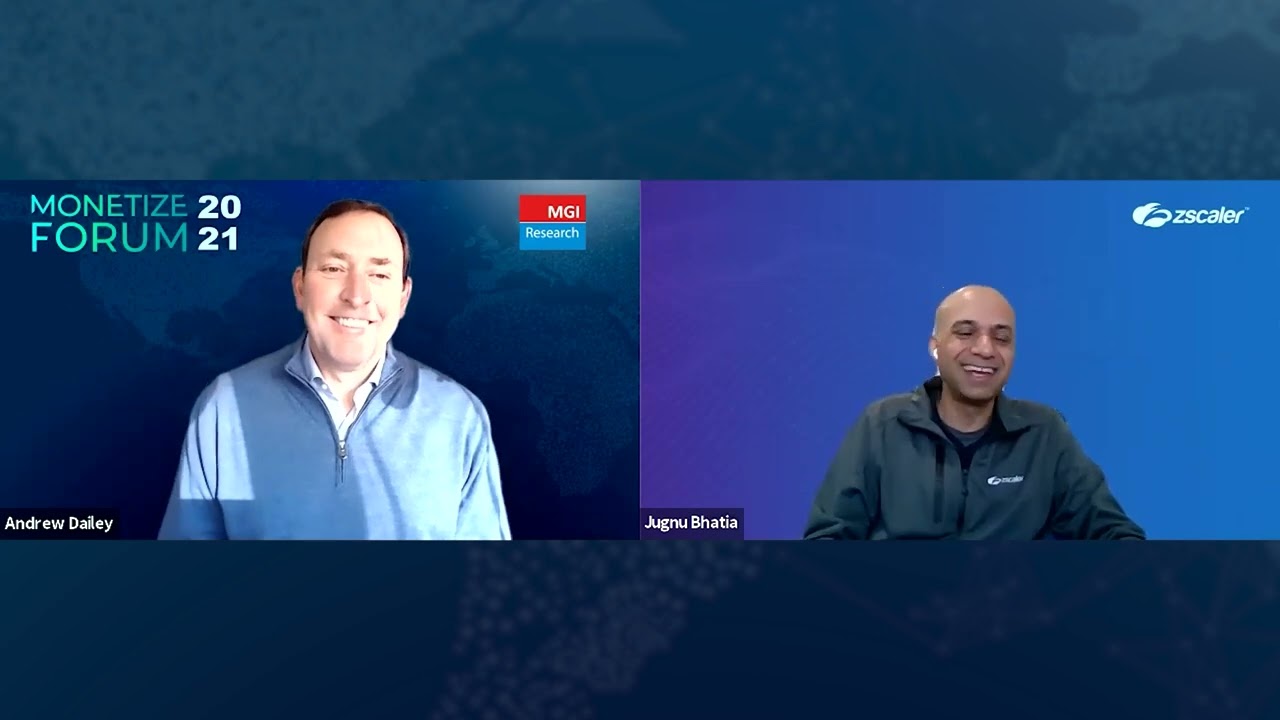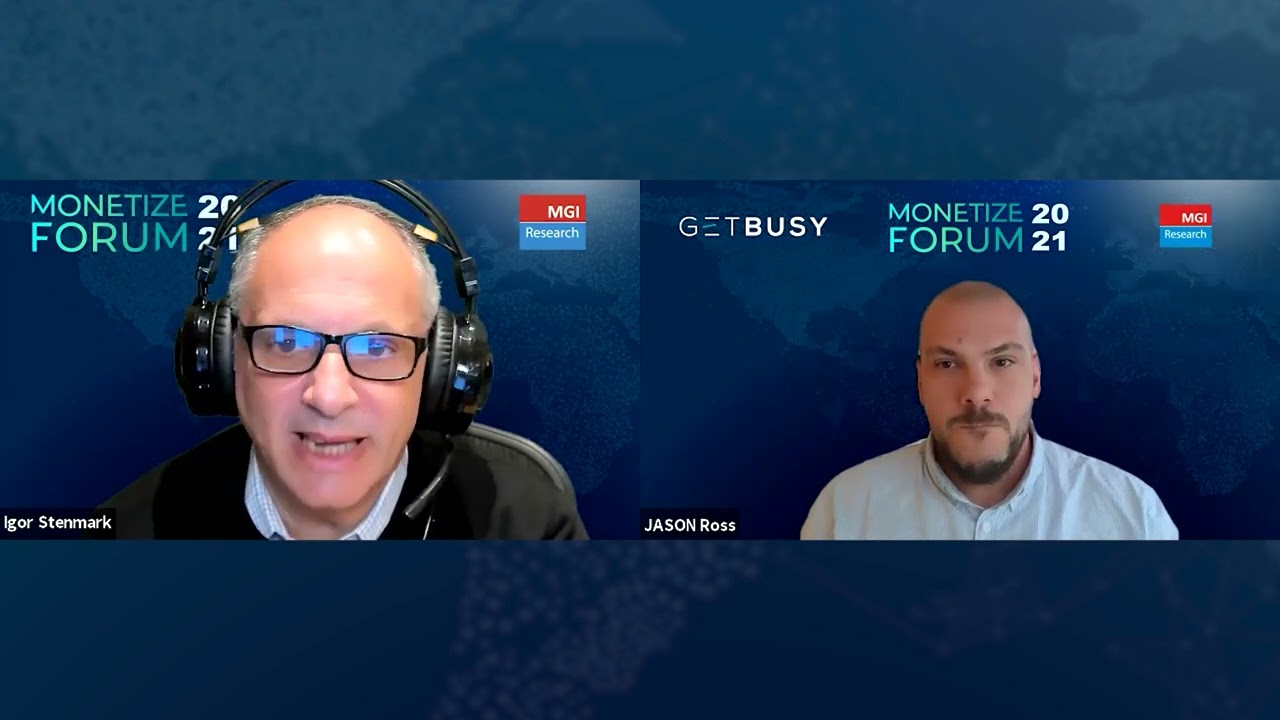There is no denying the increasing necessity of automating both the front-end and back-end of a business. For companies involved in complex selling and ordering, the challenges to achieving that kind of streamlined operation can be intimidating. These companies are juggling multiple legacy systems and cloud solutions as well as a massive amount of data. Without an organized approach to taking a company digital, a business leader risks losing what hold they still have on the enterprise and its place in the market. To provide insight on how to navigate this critical transformation process successfully, MGI Research analyst Andrew Dailey spoke with Keste CEO and Co-Founder Howard Moore at the 2021 Monetize Forum. Keste recently reached a deal with Trinity Hunt Partners and joined forces with business modernization partner Argano, allowing them to further their founding vision of helping companies achieve complete automation.
Key Issues
What is the starting point in a business’s digital transformation journey?
How should companies approach consolidating legacy systems and best-of-breed applications?
How can businesses facilitating complex selling and ordering achieve the real-time, frictionless customer experience necessary to stay relevant?
Guest Profile
Howard is the CEO of ArganoKeste. Prior, he was CEO of Keste, which he co-founded in 2004 to support clients with a comprehensive suite of “Campaign-to-Cash” solutions across North America, Europe, and South Asia. He serves on Oracle’s Executive Partner Advisory Board and was an honored finalist for Ernst & Young’s Entrepreneur of the Year in 2012.
Andrew Dailey
Hello and welcome, everyone. This is Andrew Dailey from MGI Research, and our next session is “Practical Approaches to Digitalizing Your Business.” For the last five to seven-plus years, we’ve been talking about digital transformation and bringing your business into the 21st century. There are a lot of ways to classify that, but really, it’s about how we take large, established businesses and bring them into the fully digital era in terms of automating everything. To talk about some very practical approaches to this process, I’m joined by Howard Moore, the CEO and Co-Founder of Keste. Howard, welcome to the Monetize Forum.
Howard Moore
Thank you, Andrew. It’s great to join you, and I’m looking forward to the Monetize Forum.
Andrew Dailey
So, to start, let’s just get a sense of the size and scope of the Keste business.
Howard Moore
Keste was founded in 2004. We’re about 300 people here in the US and in India, and we’re keenly focused on the area of automating complex selling and ordering. We say we’ve been focused on B2B digital business from before people said digital business. That’s the real vision of the company. In a moment, I’ll go into how we accomplish supporting this with our multi-cloud capability and how we help companies to truly hit the vision of, as you said, complete automation of the business—which, to me, is synonymous with what digital business is all about.
Andrew Dailey
You guys work with a lot of large enterprises as well as some very high-growth businesses. In both those cases, what are some of the common monetization challenges that CFOs and CIOs face?
Howard Moore
Yes. There are definitely a lot of challenges. There’s the whole “people process” you’re faced with, but ultimately, it’s about technology. From when we founded the company, we recognized that technology was quickly evolving, and you could tell where the world was headed. Companies have grown around ERPs, and if you fast-forward to today, that’s really come unbundled. Now, we’re dealing more with what we used to call a best-of-breed approach.
Customers are dealing with their own legacy software and technology, and they’ve also definitely started adopting more of the cloud-based software and technology. At this point, from a system and technology standpoint, how do you make all this work together? It’s a very interesting challenge, and it comes down to some fundamental questions. Now that data is everywhere, how do you pull that together with a good master data management approach? That’s extremely critical. How do you make all this work together from an integration standpoint? Finally, how do you put the right user experience on top of all of this?
That’s sort of the “one, two, three” that companies are faced with. Traditionally, they’re grappling with making their ERPs work, and we know the usual suspects in that category. So, we’re making this all work together versus as individual processes because the latter doesn’t really hit the mark anymore. It has to start adding up and evolving to an agile monetization platform.
Andrew Dailey
Let’s talk about that a little bit more. For large organizations, they really have some unique challenges. They’ve invested tens or hundreds of millions of dollars in their ERP systems and now recognize that they’re coming up with new business models and trying to address friction in the business. They want to change, but the question then is where do they start? Do they start on the front-end in user experience and around commerce? Do they dive into CPQ? Do they start with billing? What’s the starting point for that journey?
Howard Moore
Well, going back to the whole dot-com era, a lot of companies at the start were able to put together this front-end that looked good. However, when you really looked under the hood, there wasn’t very much behind that in terms of real capability. We’re known for being able to automate complex selling and ordering for very complex custom products, so it’s kind of funny that a lot of our customers say, “Hey, I want that Amazon experience.” Back in the day, Amazon was just sort of selling books, so my comeback to customers is, “Guys, you’re not selling books. You’re selling turbo compressors, complex communications equipment, et cetera.”
It’s very easy to go be an artist and draw pretty pictures or create pretty experiences on the front-end. There’s that front-end and what people describe as a back-end today, but the vision that we’re bringing to the market and our opportunity to really differentiate is more behind this as a digital operating platform that’s completely necessary to enable those experiences. So, you can start on the front-end, you have the back-end, and then, you have what I still like to term as the middle office. That’s where we really, really make a difference, led by our capabilities around CPQ (Configure Price Quote), to really put together a system that can take a great user experience and a mature back-end system/ERP and pull those two together with CPQ, commerce, and billing—adding up to our whole approach around revenue and monetization.
Andrew Dailey
Keste was one of the first systems integrators to have a dedicated CPQ practice. Speaking of CPQ, where do you see it fit today within the broader effort to increase sales productivity, reduce the amount of time that it takes to generate a quote, and then (as you were just describing) optimize the organization’s ability to monetize? Where’s CPQ in that picture?
Howard Moore
When we started the company, we didn’t say “digital business.” We said things like “guided selling.” We thought of it as these experiences; for example, somebody logs into their computer and brings up the solution to go in and order or sell a complex custom product. That has all changed. Now, this could be a very random event in terms of getting the attention of the end buyer. If you’re walking around with smartphones like we all do now, CPQ can really accomplish this in more of a real-time context as opposed to as these singular, standalone events.
When you have the potential buyer’s attention, the ability to actually serve up what they want to purchase in real time—that’s what a guided selling experience is about, ultimately. It’s serving up what really meets their requirements or their needs, and this concept of monetization is synonymous with real time. Without this engine that can truly start building and being what the customer actually needs, you’re quite handicapped. At that point, you’re missing the opportunity, and you’re not even really in the game.
Andrew Dailey
You guys have done a lot of work helping large, complex businesses deconstruct their agreements and digitize those in a way that enables sales reps to create customized offers—in a scalable way, which is the real trick. Describe a bit the work that you’ve done with some of your clients in terms of helping them really start to digitize those complicated agreements that were built up over many years and serve up that data across the organization and different systems that need to consume that information.
Howard Moore
Yes. For me, that’s the key to success on any solution that we’re describing today. Every customer is complex, especially in the B2B environment. Every customer has their own contracts, which often implies there’s very unique pricing for each particular partner, reseller, or customer. For our customers to really be able to automate these pricing agreements is absolutely necessary. Again, we’re trying to take the friction and that human element out of everything, and to be able to bring this into play is critical. To accomplish this at the highest level, you have to bring in this product knowledge and product information.
Certainly, pricing is a part of that overall body of information that has to be transformed in such a way that you can automate and operate in this more real-time context that we’re talking about. I think that’s where so many solutions and approaches fall short. Pricing can change every minute as we’re seeing today, so not having the ability to have these real-time updates and inject that into the entire solution and process completely compromises the situation.
Andrew Dailey
You mentioned this notion of a digital business hub, and you also mentioned the need for a real focus on a core data model. In the past, we would buy an ERP system that came with a data model, and that kind of was the digital hub, so to speak. How do you go into a company today and say, “Let’s look at the core architecture and identify what the core data model objects are as the foundation”? Where do you guys start with a client in that process in terms of trying to “de-componentize,” if you will, these systems?
Howard Moore
Again, it all comes back to that dream of one software package or one ERP to serve all the needs of enterprise-size business—that was never realistic. Now, we’ve started to incorporate best-of-breed applications, and we have customers that might have software from 20 different companies that we incorporate into one comprehensive solution.
You start with simple concepts; there’s nothing new here. You focus on a single source of truth, making sure we have this absolutely critical real-time integration, and really building that foundation so companies can manage the data. Then, you get into other issues. Sure, we can bring in the right master data management approach, leveraging simple concepts and a single source of truth. Ultimately, though, the other challenge we’re faced with is how to pull all this together and have the pleasing user experience performance. That’s always a challenge. In fact, I was just dealing with that situation this morning with a customer. When the applications and the information is spread all over the place, how do you literally engineer this so that you get performance that’s going to meet and delight a customer?
Andrew Dailey
Yes, absolutely. Let’s talk a little bit about the issue of change management as well. When projects go off the rails, what’s the typical source of the problems, and how do you remediate that?
Howard Moore
Well, it’s the basics. I always go back to making sure companies are really ready for this transformation and the evolution that that has to occur. We all know that COVID (which we’ll probably talk about little bit more in a moment) has changed everything. It’s accelerated the need to be completely digital and automated. The customer needs to be in a state of readiness and maturity to really take on these projects. I think everybody thought, “Oh, cloud’s going to make everything easy,” and I have to kind of laugh at that. Five years ago, I think it was seen as another easy button. At the end of the day, there’s a lot of good around cloud-based approaches and solutions, but now, you have this kind of sprawl that I’ve been describing since we started the conversation here. There’s a lot of sprawl, and in many ways, it’s actually made these projects much more difficult in terms of how to put all this together into one cohesive system. So, we need to really assess customer maturity.
The other part is to really line that up with the CFO more and more. I see so much frustration with CFOs. They know they need this digital operating platform to really help transform their business. Again, we all recognize the mega-trend, but how do you go from a business selling physical products to now selling services, really making that transformation from physical to digital? There’s a massive gap there. The CFOs know where they need to be. They know the consequences and all the problems that will bubble up. They know it’s great to be in real-time; if you accomplish that, then you get into all the downstream issues like revenue recognition and things like that. We’re getting more and more audiences with challenged CFOs, and they’re placing their confidence in the belief that we can actually build this back-office digital operating platform that will help them move from a physical product world to more of the digital services role. They have to make it happen, or their business is not going to be relevant.
Andrew Dailey
Yes, that’s right. We’re certainly seeing more and more that CFOs are really the ones making it happen in the organization. Going back to your point on COVID, last year, Keste partnered with Trinity Hunt Partners, which is a Dallas-based private equity firm, and you got a deal done. You brought on an equity partner in the beginning of the global pandemic. There’s a lot there to unpack. But first, just as a founder CEO, finding a major equity partner is not an event you take lightly. I’m sure it took considerable time to think through what you were looking for and what you wanted. What went into your decision? How did you land with Trinity Hunt? Why was that the choice versus the other options (because you guys have a lot of options)? Why do you feel that was the right one for Keste?
Howard Moore
It’s a very good question. We’ve been very fortunate—myself and Sri Ayyeppen, who is President, CTO, and other co-founder of the company. We’ve been approached routinely over the last eight years, and we’re very proud of what we’ve put together. We’ve been very focused, and our original vision is maintained today. I don’t claim to be right very often, but Sri and I knew we had a great idea jumping on this train of complete automation of a business, very keenly focused on what I describe as complex selling and ordering (though there are a lot of ways to describe it).
Our team was very important in constructing the company. It’s a great team, the smartest people I’ve ever worked with, and I know that will always be true. We’ve carefully crafted and built up a company that’s really in the right place and time to help other companies make this evolution to digital business. What’s really exciting is that it turns out Trinity Hunt is based in Dallas. We knew about each other for a few years. I always feel a little sappy saying this, but as soon as we met face-to-face, it felt like serendipity.
They have a great track record. They understand the opportunity in this space, and they’re looking for the right leadership and, ultimately, the right team to bring on as their first acquisition to really build out the whole vision of this digital operating platform. The other part I just have to compliment them on is that they’re looking for operators. I would describe them as patient with investment and funding which will allow us to stay on this trajectory. On our side, we needed fuel—outside capital to take advantage of what we’ve been describing the last few minutes. The time is now, and Sri and I were not going to miss the opportunity. We knew it was coming. It’s here, and the opportunity is really endless.
So, it’s a great partnership, and now we’ve brought on Chip Register, the CEO of Argano. We’ve already accomplished our first acquisition with the third and fourth to come. It all adds up to this being great for our customers. We can bring more capability and deeper capabilities. It’s also great for our employees because they now have an opportunity to realize the next chapter in the story. Our goal is we’ll certainly be a $200 million to $250 million company in the next probably three or four years. So, it checks a lot of boxes, and I could not be more pleased.
Andrew Dailey
Well, congratulations. It’s a huge validation of your strategy, the team that you have, and your client base because, ultimately, there’s a firm that’s going to put, as you mentioned, a couple of $100 million of growth capital into this. To get them to really buy-in and believe means it’s not just you guys seeing this, and it’s not just your customers. It’s professional money as well. So, congrats on getting that done.
We’re out of time here, but Howard Moore, CEO of Keste, thank you very much. We have another session with Chip Register of ArganoKeste here at the Monetize Forum. I’d encourage everyone to check out the Keste booth in the platform. Howard will be around for the networking, so feel free to reach out. He’s a great resource. Thanks everyone for joining us today, and enjoy the rest of the Forum.
Howard Moore
Thank you, Andrew.




